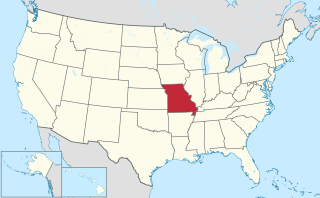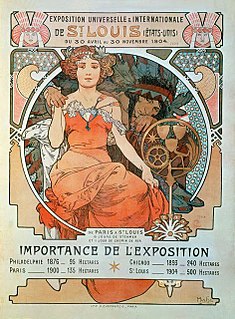
The Field Museum of Natural History (FMNH), also known as The Field Museum, is a natural history museum in Chicago, and is one of the largest such museums in the world. The museum maintains its status as a premier natural-history museum through the size and quality of its educational and scientific programs, as well as due to its extensive scientific-specimen and artifact collections. The diverse, high-quality permanent exhibitions, which attract up to two million visitors annually, range from the earliest fossils to past and current cultures from around the world to interactive programming demonstrating today's urgent conservation needs. The museum is named in honor of its first major benefactor, the department-store magnate Marshall Field. The museum and its collections originated from the 1893 World’s Columbian Exposition and the artifacts displayed at the fair.

The National Museum of American History: Kenneth E. Behring Center collects, preserves, and displays the heritage of the United States in the areas of social, political, cultural, scientific, and military history. Among the items on display is the original Star-Spangled Banner. The museum is part of the Smithsonian Institution and located on the National Mall at 14th Street and Constitution Avenue NW in Washington, D.C.

The Museum of History & Industry (MOHAI) is a history museum in the South Lake Union neighborhood of Seattle, Washington. MOHAI is the largest private heritage organization in Washington state, maintaining a collection of nearly 4 million artifacts, photographs, and archival materials that primarily focus on Seattle and the greater Puget Sound region. A portion of this collection is on display in the museum's galleries at the historic Naval Reserve Armory in Lake Union Park. Highlights include Boeing's first commercial plane, the 1919 Boeing B-1; the Petticoat Flag, an 1856 American Flag sewn by women during the Battle of Seattle that year; and the Rainier Brewing Company's 12-foot tall neon "R" sign. In addition to both permanent and temporary exhibits, MOHAI administers ongoing youth and adult programming, and regularly hosts public events in partnership with other community organizations, particularly within the South Lake Union neighborhood. MOHAI is accredited by the American Alliance of Museums and is a Smithsonian affiliate museum.

The Burke Museum of Natural History and Culture is a natural history museum in Seattle, Washington, in the United States. Established in 1899 as the Washington State Museum, it traces its origins to a high school naturalist club formed in 1879. The museum is the oldest in Washington state and boasts a collection of more than 16 million artifacts, including the world's largest collection of spread bird wings. Located on the campus of the University of Washington, the Burke Museum is the official state museum of Washington.

Central Methodist University is a private university in Fayette, Missouri. CMU is accredited to offer master's, bachelor's, and associate degrees. The school is affiliated with the United Methodist Church.

The Missouri History Museum is located in St. Louis, Missouri in Forest Park showcasing Missouri history. The museum is operated by the Missouri Historical Society, which was founded in 1866. The main galleries of the museum are free through a public subsidy by the Metropolitan Zoological Park and Museum District
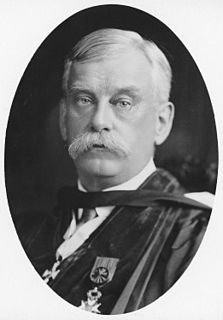
Rev William Jacob Holland FRSE LLD was the eighth Chancellor of the University of Pittsburgh (1891–1901) and Director of the Carnegie Museums of Pittsburgh. He was an accomplished zoologist and paleontologist, as well as an ordained Presbyterian minister.
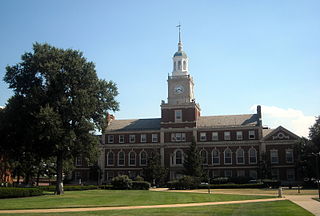
The Moorland–Spingarn Research Center (MSRC) in Washington D.C. is located on the campus of Howard University on the first and ground floors of Founders Library. The Moorland–Spingarn Research Center (MSRC) is recognized as one of the world's largest and most comprehensive repositories for the documentation of the history and culture of people of African descent in Africa, the Americas, and other parts of the world. As one of Howard University's major research facilities, the MSRC collects, preserves, organizes and makes available for research a wide range of resources chronicling the Black experience. Thus, it maintains a tradition of service which dates to the formative years of Howard University, when materials related to Africa and African Americans were first acquired.

The Peabody Museum of Archaeology and Ethnology is a museum affiliated with Harvard University in Cambridge, Massachusetts. Founded in 1866, the Peabody Museum is one of the oldest and largest museums focusing on anthropological material, with particular focus on the ethnography and archaeology of the Americas. The museum is caretaker to over 1.2 million objects, some 900 linear feet of documents, 2,000 maps and site plans, and approximately 500,000 photographs. The museum is located at Divinity Avenue on the Harvard University campus. The museum is one of the four Harvard Museums of Science & Culture open to the public.

Alexander Monroe Dockery was an American physician and politician from the state of Missouri. A Democrat, he was a multi-term member of the United States House of Representatives and the 30th Governor of Missouri.
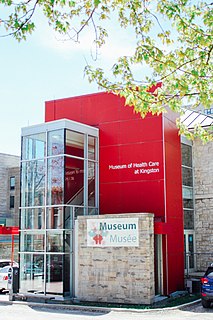
The Museum of Health Care is located in Kingston, Ontario, Canada in the Ann Baillie Building on the Kingston General Hospital site and covers medical history from the 18th century to the modern era. Its research and collection are searchable on-line via the their website and online catalogue.
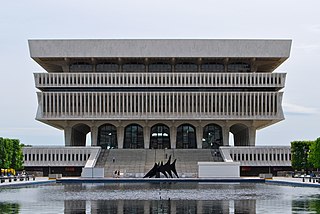
The New York State Museum is a research-backed institution in Albany, New York, United States. It is located on Madison Avenue, attached to the south side of the Empire State Plaza, facing onto the plaza and towards the New York State Capitol. The museum houses art, artifacts, and ecofacts that reflect New York’s cultural, natural, and geological development. Operated by the New York State Education Department's Office of Cultural Education, it is the nation's oldest and largest state museum. Formerly located in the State Education Building, the museum now occupies the first four floors of the Cultural Education Center, a ten-story, 1,500,000-square-foot (140,000 m2) building that also houses the New York State Archives and New York State Library.
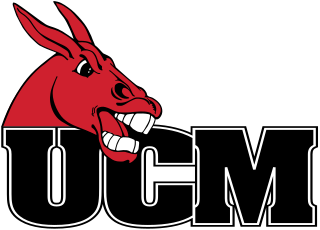
The sports teams at the University of Central Missouri are known as the Mules (men) and Jennies (women). They participate in the NCAA's Division II and in the Mid-America Intercollegiate Athletics Association.

The Dittrick Museum of Medical History is part of the Dittrick Medical History Center of the College of Arts and Sciences of Case Western Reserve University, Cleveland, Ohio. The Dittrick Medical History Center is dedicated to the study of the history of medicine through a collection of rare books, museum artifacts, archives, and images. The museum was established in 1898 by the Cleveland Medical Library Association and today functions as an interdisciplinary study center. It is housed in the Allen Memorial Medical Library on the campus of Case Western Reserve University in Cleveland, Ohio's University Circle.
The Vietnam Center and Archive collects and preserves the documentary record of the Vietnam War. The Vietnam Center and Archive, part of Texas Tech University, is the nation's largest and most comprehensive collection of information on the Vietnam War. On August 17, 2007, the Texas Tech Vietnam Center became the first U.S. institution to sign a formalized exchange agreement with the State Records and Archives Department of Vietnam. This opens the door for a two-way exchange between the entities.

The Robert S. Peabody Institute of Archaeology, formerly known as the Robert S. Peabody Museum of Archaeology, is a learning center and archaeological collection in Andover, Massachusetts. Founded in 1901 through a bequest from Robert Singleton Peabody, an 1857 Phillips Academy alumnus, the institute initially held the archaeological materials collected by Peabody from Native American cultures. Peabody's passionate interest in archaeology led him to create the institute at Phillips Academy to encourage young people's interest in the sciences, and to foster respect and appreciation for the Native American peoples who have inhabited that hemisphere for thousands of years.
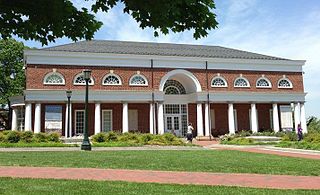
The Albert and Shirley Small Special Collections Library at the University of Virginia is a research library that specializes in American history and literature, history of Virginia and the southeastern United States, the history of the University of Virginia, Thomas Jefferson, and the history and arts of the book. The library is named after Albert and Shirley Small, who donated substantially to the construction of the library's current building. Albert Small, an alumnus of the University of Virginia, also donated his large personal collection of "autograph documents and rare, early printings of the Declaration of Independence." This collection includes a rare printing of the Dunlap broadside of the Declaration of Independence. Joining the library's existing Dunlap in the Tracy W. McGregor Collection of American History, Small's copy made U.Va. the only American institution with two examples of this, the earliest printing of the nation's founding document. It also includes the only letter written on July 4, 1776, by a signer of the Declaration, Caesar Rodney. The Albert H. Small Declaration of Independence Collection boasts an interactive digital display which allows visitors to view the historical documents electronically, providing access to children and an opportunity for visitors to manipulate the electronic copies without risk of damage to the original work.
Harry L. George was a twentieth century American collector of Native American artifacts.
Gertrude Bass Warner was an American twentieth-century art collector, with particular interests in Asian art, religious artifacts, daily-life textiles, ceramics, paintings, and photographs. She lived, traveled, and collected art in East Asia from 1904 to 1938. In 1922 she became the curator for life and first director of the University of Oregon Museum of Art at the University of Oregon, helping to design the historic building with famed architect Ellis F. Lawrence. She had the museum built to house the collection of more than 3,700 works of art, the Murray Warner Collection of Oriental Art, named after her late husband, Murray Warner.. She donated the collection to the University in 1933. She traveled throughout China, Japan, Korea, and Russia purchasing works of art and artifacts, taking photographs, and writing extensive field notes. She visited thousands of cultural sites and studied Shintoism, Buddhism, and Chinese and Japanese etiquette, and the human experience, and became an innovator in the promotion of Asian art and culture appreciation, Asian studies, and multiculturalism. She is considered a female pioneer of museum studies.




